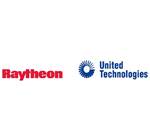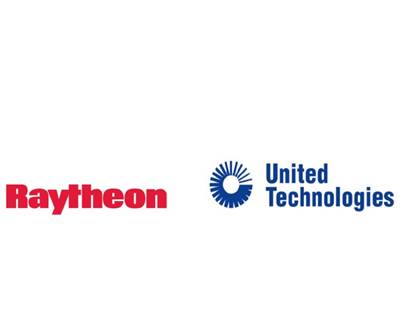Merger mania, part II?
Columnist Dale Brosius considers the surges of company mergers that have affected the composites industry over the years.
In June, aerospace and defense giants Raytheon (Waltham, Mass., U.S.) and United Technologies (UTC; Farmington, Conn, U.S.) announced they will merge by mid-2020 to form a single entity named Raytheon Technologies. If it goes forward, it will be one of the largest aerospace/defense mergers in history with pro forma revenues of $74 billion. Coincident with the merger, United Technologies will spin off or divest its Otis Elevator and Carrier (heating and air conditioning) subsidiaries, actions that were already planned for mid-2020 following the company’s acquisition of Rockwell Collins in 2018, after Rockwell Collins' acquisition of aircraft interiors supplier B/E Aerospace in 2017. UTC combined Rockwell Collins with UT Aerospace Systems (which was a combination of Hamilton Sundstrand and Goodrich Aerospace) to form Collins Aerospace. UTC will also bring Collins Aerospace and subsidiary Pratt and Whitney (jet engines) to the merger with Raytheon.
Are you lost yet? With so many moving pieces, it’s difficult to keep track. Over the last several years, there have been a number of mergers and acquisitions in the aerospace and defense arena. UTC sold off its Sikorsky Helicopters business to Lockheed Martin (Ft. Worth, Texas, U.S.) in 2015. Boeing (Chicago, Ill., U.S.) acquired Aurora Flight Sciences in 2017. There was the merger of Alliant Techsystems (ATK) with Orbital Sciences in 2014, followed by Northrop Grumman’s (Falls Church, Va., U.S.) acquisition of Orbital ATK in 2018. And we may not be done yet.
We’ve been here before. Back in 1993, then U.S. Defense Secretary William Perry convened a dinner with executives from the major defense contractors, an event later nicknamed “the last supper.” With the Cold War ending, and the military procurement budget falling almost two thirds since its peak in 1985, Perry encouraged the industry to combine into fewer companies to survive going forward.
And combine they did — by one estimate, thirty-two contractors shrunk to nine over the next five years. Lockheed bought General Dynamics’ jet fighter business in 1993. Martin Marietta bought General Electric’s defense and space business in 1993 and General Dynamics rocket division in 1994. In 1995, Lockheed merged with Martin Marietta to form Lockheed Martin, and then proceeded to buy the Loral defense business in 1996. After buying LTV Aerospace in 1992, Northrop Corp. bought Grumman Aerospace in 1994 to form Northrop Grumman, and the company purchased the defense electronics business of Westinghouse in 1996. Boeing, later to the game, acquired Rockwell International’s defense and space unit in 1996 and McDonnell Douglas in 1997. Raytheon was also active, purchasing Hughes Aircraft in 1996 and Texas Instruments’ defense business in 1997. My head hurt just from looking up all this stuff!
In late 1997, Lockheed Martin offered to buy Northrop Grumman for $11.6 billion to further consolidate the industry. The deal was blocked in 1998 by the U.S. Justice Department, ending the merger mania in U.S. aerospace and defense. For a while, anyway.
We know that the aerospace and defense markets are important to the composites industry, but did all these previous mergers and acquisitions have a “knock on” effect? Did the same set of drivers that affected defense contractors also motivate material suppliers? It’s hard to prove definitive cause and effect, yet a similar level of consolidation took place within the advanced composites supply base. It happened around the same time frame and I was right in the middle of it, working for industry-leading prepreg manufacturer Fiberite.
In 1993, American Cyanamid purchased the BASF advanced composites prepreg business and adopted the name Cytec. The same year, Hexcel entered bankruptcy, emerging in 1995 actively seeking acquisitions. While its bid for Fiberite failed, it did successfully acquire Ciba Geigy’s advanced composites business in 1996, giving it a strong position in Europe. Hexcel also acquired the Hercules fibers and prepreg business the same year. Carlisle Enterprises, in concert with DLJ Merchant Banking, did buy Fiberite from Imperial Chemical Industries in 1995, selling most of the company to Cytec in 1997 (Hexcel bought the prepreg product line serving the satellite market). Following the acquisition of several smaller prepreggers, Cytec purchased the prepreg business of 3M Corp. and the BP Amoco carbon fiber facilities in 2001. The net effect was to greatly concentrate the aerospace prepreg market among three major suppliers — Hexcel (Stamford, Conn., U.S.), Cytec and Toray (Tokyo, Japan) — which held for many years.
The advanced composites materials business is rather global today, serving a broader swath of end uses, and acquisitions are again on the menu. Notably, Toray purchased Zoltek in 2013, Solvay (Alpharetta, Ga., U.S.) bought Cytec in 2015, Toray acquired TenCate Advanced Composites in 2018, and Teijin bought Renegade Composites in 2019. While it’s yet to be seen if the Raytheon-UTC merger gets regulatory approval, I don’t believe we’ve seen the last of such activity on the materials side.
Related Content
Plant tour: Airbus, Illescas, Spain
Airbus’ Illescas facility, featuring highly automated composites processes for the A350 lower wing cover and one-piece Section 19 fuselage barrels, works toward production ramp-ups and next-generation aircraft.
Read MorePlant tour: Aernnova Composites, Toledo and Illescas, Spain
RTM and ATL/AFP high-rate production sites feature this composites and engineering leader’s continued push for excellence and innovation for future airframes.
Read MoreDevelopment of a composite liquid hydrogen tank for commercial aircraft
Netherlands consortium advances cryogenic composites testing, tank designs and manufacturing including AFP, hybrid winding, welding of tank components and integrated SHM and H2 sensors for demonstrators in 2025.
Read MoreCombining multifunctional thermoplastic composites, additive manufacturing for next-gen airframe structures
The DOMMINIO project combines AFP with 3D printed gyroid cores, embedded SHM sensors and smart materials for induction-driven disassembly of parts at end of life.
Read MoreRead Next
Raytheon to merge with United Technologies Corp.
The new company, Raytheon Technologies Corp., will combine defense and aerospace capabilities from both companies.
Read MoreNext-gen fan blades: Hybrid twin RTM, printed sensors, laser shock disassembly
MORPHO project demonstrates blade with 20% faster RTM cure cycle, uses AI-based monitoring for improved maintenance/life cycle management and proves laser shock disassembly for recycling.
Read MoreCeramic matrix composites: Faster, cheaper, higher temperature
New players proliferate, increasing CMC materials and manufacturing capacity, novel processes and automation to meet demand for higher part volumes and performance.
Read More











